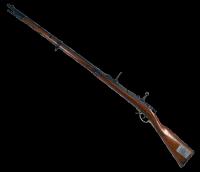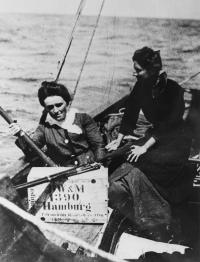The Mauser model 71 rifle
Published in 18th–19th - Century History, 20th-century / Contemporary History, Features, Issue 1 (Jan/Feb 2011), Pre-Norman History, Revolutionary Period 1912-23, Volume 19
Mauser model 71 rifle
On 26 July 1914 the Asgard, the yacht of Erskine Childers, then a famous writer, sailed into Howth with 900 Mauser rifles, which were quickly unloaded and distributed to waiting Volunteers and boys of Fianna Éireann. This followed the very successful landing in April by the Ulster Volunteer Force of 35,000 German, Italian and Austrian rifles at Larne. The Howth gun-running, although on a smaller scale, was heralded as a great success and the rifles were quickly hidden, despite the efforts of the police and the army to intercept them. Some frustrated soldiers of the King’s Own Scottish Borderers, returning to their barracks, opened fire on Bachelors Walk at a jeering crowd, killing four and wounding 37. The next day the remaining rifles were landed at Kilcoole, Co. Wicklow: in total, 1,500 rifles were landed, along with 45,000 rounds of ammunition.
The Mauser (known ever after as the ‘Howth rifle’) was designed by Peter Paul Mauser

Mrs Childers and Mary Spring Rice aboard the Asgard with Mauser rifles and ammunition boxes (marked ‘Hamburg’) about to be landed in July 1914. Over the last three years the yacht has been undergoing conservation at the National Museum of Ireland, Collins Barracks, and will be going on permanent exhibition in 2011. (National Museum of Ireland)
and was the first cartridge rifle adopted by the Prussian Army in 1872. It was a revolutionary design then, but by 1914 the German Army was using the more modern 1898 Mauser Gewehr rifle. Patrick Pearse admitted shortly after the landing that the Mauser was of an ‘antiquated pattern, without magazines, and [was] much inferior to the British service rifle’. On the other hand, Darrel Figgis, who purchased the rifles with The O’Rahilly in Hamburg, described the Mauser as ‘ideal for our purpose, cheap and undeniably effective’.
Although technically obsolete, the Mauser was an effective weapon, firing a larger bullet than the British Lee-Enfield. It had ferocious recoil, however, as Tom Walsh learned:
‘In the excitement I did not heed the lectures and did not hold the gun correctly. The result was that [the first time I fired it] the butt hit me under the chin and knocked me out.’
The other disadvantage was the low rate of fire (four or five rounds per minute) as it did not have a magazine. Soldiers in the British Army at the time were trained to fire fifteen bullets a minute with their Lee-Enfield rifles, which had ten-round magazines.
Nevertheless, the landing of the rifles was a public relations success for the Volunteers. Tom Clarke took his rifle to Limerick the following day. On arrival he marched with it on his shoulder from the station to John Daly’s home and presented it to his old friend and prison comrade. Within a week, however, the First World War had started and Erskine Childers rejoined the British Army. The Irish Volunteers then suffered a split in August between those who followed John Redmond, who supported the British war effort, and the minority who recognised Eoin MacNeill as their leader. HI
Lar Joye is curator of military history at the National Museum of Ireland (Decorative Arts and History).
















